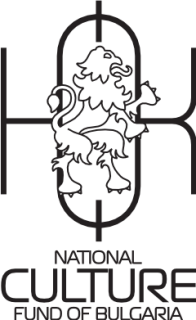The graphic designer, illustrator, and font author Marta Cerdà seeks the golden mean between illustrations and typography, the past and the directions in which design disciplines are developing today.
Born in Barcelona, after completing her studies at the Elisava School of Design and Engineering (Barcelona) and gaining several years of experience in various advertising agencies in Spain and Germany, Marta Cerdà founded her own design studio in 2008. Since then, she has dedicated herself to numerous international projects as a graphic designer, illustrator, art director, and typographer. Her bold and colorful illustrations are perhaps the first thing that captures attention in her work. Her clients include brands and organizations such as: The Guardian, Vanity Fair, Esquire, Die Zeit, Penguin Books, Coca Cola, Nike, Converse, Spotify, Netflix, Apple, Volkswagen, Vogue, The New York Times, and many more. She is visiting Bulgaria for the first time now as a spekaer at the 21st edition of the design series Melba Meetings.
Who or what has influenced your work the most in terms of style, taste in color, illustration and typography?
There are many influences, and that is also something in constant change. There are even influences that I might not be aware of. But mostly, anything to do with the history of letters, graphic design and art is always an influence. I tend to look back all the time for inspiration, I will talk a lot about this at MELBA MEETINGS #21.
Your projects often incorporate a variety of visual mediums like calligraphic elements, bold forms and bright, fluorescent colors. Can you walk us through your creative process for bringing these pieces to life? Do you have any specific tools (both digital and hardware) you love using? How do you manage to keep your style so authentic and vibrant without repeating yourself?
I don’t think I have a style, at least I can’t see it. But my work usually has a very strong visual ingredient in it, that is a common threat. I usually start a project by focusing on the concept, looking for references and ideas. But I never sketch, for me sketching is like a straitjacket. I like to have a conceptual playground where to work and get lost in it. In terms of time and efficiency it is not the best approach, but for me, in terms of creativity it is the best way to work. About tools, I don’t like to stick to one tool, I have to explore options and different softwares to know which is the best tool to work with. I think the project should decide that, not my priority for a specific software.
You have an impressive portfolio for respected clients from all over the world. How do you balance between expressive freedom and requested constraints?
Well, I love creative constraints, it is more challenging, it is what graphic design is, solving problems. But probably the best works I have done, or more popular, come from a total creative freedom. Paradoxically, those have been the hardest. I am definitely my worst client, my ability to be self critical is huge, sometimes so much that it can have a paralyzing effect.
What’s the one skill you want to get better at?
At absolutely everything. I want to get better and faster at conceptualizing, I want to become a better animator, cgi artist, better control of the Ais, better speaker, better at calligraphy, better at drawing. There is always room to improve at what you do, and that is what is exciting about life.
How do you break through creative stuckness to ignite new flow?
I can’t say I have found the formula. But I know that when I am stressed with non-work related things I get blocked. So I tend to have a holistic approach. If I don’t solve my problems outside of work, they come to haunt me when I work. But, that said, I try to accept that sometimes the creative flow is high and sometimes is low, and that is also life, I am not a machine, and I don’t want to become one.
What skills and knowledge do the next generation of designers need to possess in order to face the current challenges (AI, environmental crisis, societal disruptions, etc.)?
That is a good question that I honestly don’t know if I can give an answer. I think they will need to be fluid and flexible, but also creatively conscientious when designing.
Is there something specific that you want to discover or try in Bulgaria?
Well, my visit will be very brief, but I am dying to try your food, especially the Banista and the Tarator! I hope I can plan something longer in the near future and visit places like the Rila Monastery or Plovdiv.
What do you love most about being a designer?
Uff, I totally love all the parts of designing. I love conceptualizing, I love the process of designing, I love being lost, I love when I find the idea that I want to work with! And I absolutely love to see a beautiful letter or a piece of design or art, and I don’t mind if it’s 5000 years old or if it’s made tomorrow in AI.
Melba Meetings 21 will take place on September 29th at 19:00 h at the independent space for contemporary art and culture Derida Stage (32 Tsar Samuil Street). The event is free of charge thanks to our longtime partners, Fashion Days. The project is realized with the support of the National Culture Fund within the “One-Year Grant” program. For more updates, follow the event on Facebook here.
